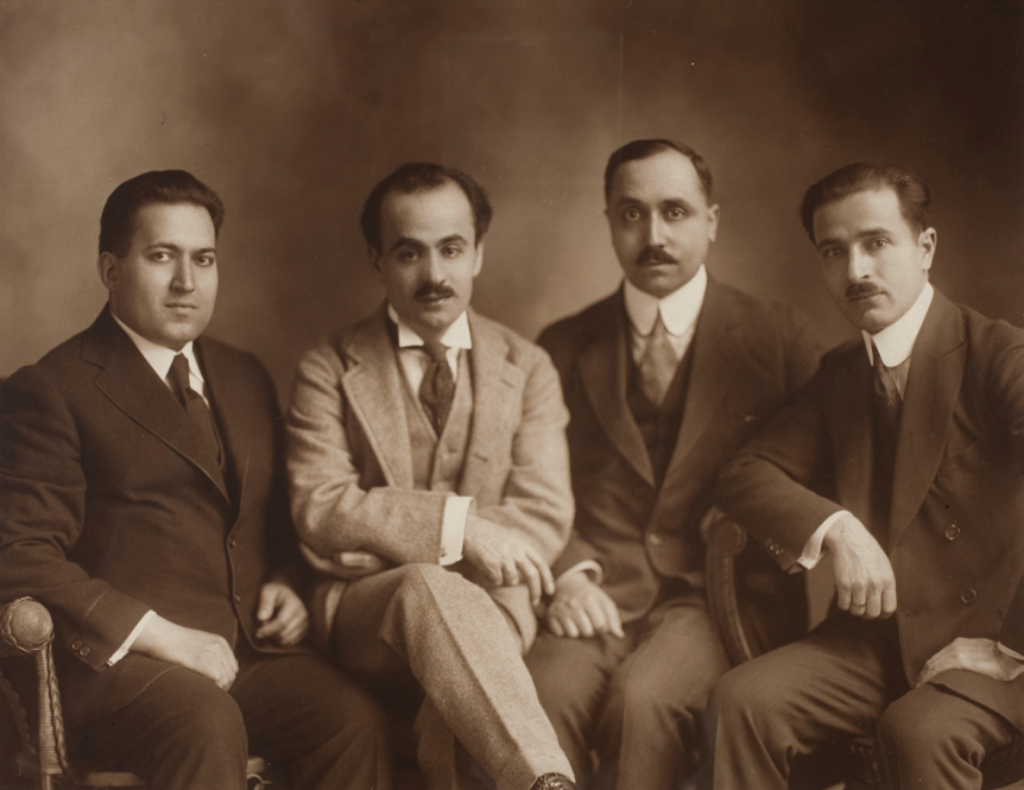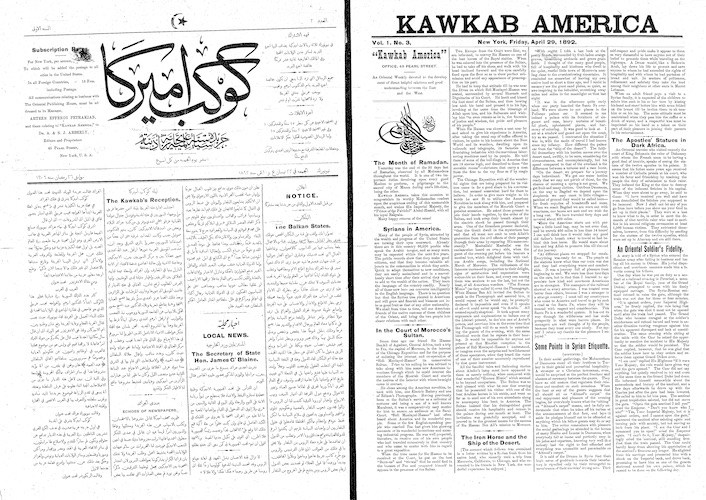How Arab Americans Shaped Modern Arabic Literature

By: Arwa Almasaari / Arab America Contributing Writer
December 18th is World Arabic Language Day, marking the UN’s 1973 decision to make Arabic its sixth official language. The day celebrates the language’s cultural richness and beauty. At Arab America, we honor the contributions of Arab Americans to modern Arabic literature.
Arab Americans and Their Influence on Arabic Literature
Arab Americans significantly influenced modern Arabic literature through their contributions to the Mahjar (Arab diaspora) literary movement, which emerged in the Americas in the early 20th century. This movement, led by Arab immigrant writers, played a key role in rejuvenating Arabic literature by introducing innovative ideas and breaking away from traditional literary norms. Among the most prominent figures of this movement were members of Ar-Rabitah al-Qalamiyyah (The Pen League), a groundbreaking literary society based in New York City.
The Foundations of the Mahjar Movement
The Mahjar movement arose during a transformative period for the Arabic-speaking world known as Al-Nahda (The Arab Renaissance), a time of significant cultural, linguistic, and literary evolution. Arab Americans such as Kahlil Gibran, Mikhail Naimy, and Ameen Rihani were instrumental in extending this revival into the Americas. These writers rejected the stifling imitation of classical Arabic literature and sought to reform its forms and content to reflect contemporary sensibilities. Their works emphasized individuality, spiritual exploration, and emotional depth—qualities heavily inspired by Romanticism.
The Pen League was the first Arabic-language literary society in North America, formed initially by Nasib Arida and Abd al-Masih Haddad and later reconstituted in 1920 under Gibran’s leadership. Its members included notable figures such as Elia Abu Madi and Nadra Haddad. Together, they established the foundation for a vibrant literary tradition in the Arab diaspora, aiming to “lift Arabic literature from the quagmire of stagnation,” as articulated by Naimy.
Transforming Arabic Poetry and Prose
The Mahjar writers revolutionized Arabic poetry by breaking free from rigid traditional structures and exploring freer, lyrical forms. This stylistic innovation paralleled the League’s broader literary philosophy, which sought to prioritize the writer’s emotional and spiritual experiences over adherence to classical conventions. Gibran, in particular, became renowned for his poetic prose and philosophical explorations, exemplified in works like The Prophet, which bridged so-called Eastern mysticism with Western ideals of individualism.
Naimy’s critical essays, notably those in Al-Ghorbal (The Sieve), challenged conventional Arabic literary aesthetics. He criticized the blind imitation of classical Arabic poets and advocated for literature that reflected contemporary human concerns. His critique laid the groundwork for modern Arabic literary criticism, inspiring Arab writers to reevaluate their relationship with tradition and innovation.
Cultural Intermediaries and the Arab Renaissance
The Mahjar writers viewed themselves as cultural intermediaries, straddling the divide between their Arab heritage and their adopted land’s ideals. They aspired to bring the best of both worlds together—introducing progressive Western ideas to the Arab world while sharing the spiritual richness and cultural depth of the East with the West. This dual mission was evident in their works, which often grappled with themes of identity, exile, and the tension between materialism and spirituality.

The Pen League also played a key role in contributing to the first U.S.-based periodicals, helping to shape the literary and cultural landscape for Arab immigrants. Newspapers like Kawkab America (founded in 1892) and magazines like Al-Funoon (1913–1918) provided platforms for Mahjar writers to share poetry, essays, and stories. These publications were vital in maintaining cultural ties among Arab immigrants and emphasized the importance of the Arabic language among early Arab intellectuals in the diaspora.
Navigating the Challenges of Immigration
Arab American writers did not merely contend with literary challenges; they also faced practical and cultural obstacles. Living in a foreign land, they experienced alienation and disorientation, which became recurring themes in their works. The Mahjar writers explored these feelings of displacement while imagining new possibilities for Arab identity in the diaspora.
For example, Gibran’s essay “The Future of the Arabic Language” urged Arab writers to modernize their language and literature, advocating for innovation as a way to adapt to changing realities. Similarly, Rihani’s poetry addressed the complexities of East-West relations, balancing a critique of American materialism with admiration for its energy and potential.
The Pen League’s Enduring Legacy
The Pen League dissolved in the 1930s following Gibran’s death and Naimy’s return to Lebanon. However, its influence on Arabic literature has endured. By prioritizing human experience, spirituality, and creative freedom, the Mahjar writers helped usher Arabic literature into the modern era. Their work inspired subsequent generations of writers to embrace new forms and ideas while remaining rooted in their cultural heritage. These writers not only enriched Arabic literature but also demonstrated the power of diaspora communities to shape cultural and intellectual landscapes across borders.
Arwa Almasaari is a scholar, writer, and editor with a Ph.D. in English, specializing in Arab American studies. She often writes about inspirational figures, children’s literature, and celebrating diversity. You can contact her at arwa_phd@outlook.com
Check out our blog here!








